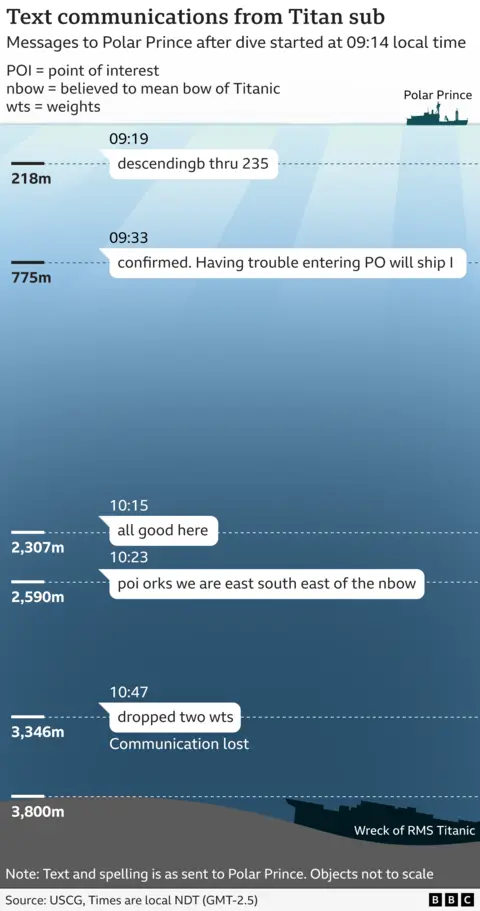OceanGate’s Titan submersible imploded on its journey to the wreck of the Titantic because of poor engineering and multiple failures to test the vessel, according to an official report.
Titan imploded in June 2023, killing all five passengers on board including OceanGate’s chief executive.
The US National Transportation Safety Board (NTSB) found the engineering process behind the vehicle was “inadequate”, resulting in faults which meant it failed to meet strength and durability requirements.
The NTSB said because the firm did not adequately test Titan it did not know its actual strength. It was also unaware it was damaged and should have been removed from service before its last voyage.
Titan disappeared in the North Atlantic as it attempted to dive to the wreck of Titanic which lies some 372 miles from St. John’s in Newfoundland and Labrador in Canada.
In August, the US Coast Guard released a damning report into the implosion which found that the incident was “preventable” and criticised OceanGate’s “critically flawed” safety practices.
Stockton Rush, OceanGate’s chief executive and co-founder, operated the Titan on its final journey.
The passengers, who paid up to $250,000 each to take part in the dive, deep-sea explorer Paul-Henri Nargeolet, Shahzada Dawood and his 19-year-old son Suleman Dawood and Hamish Harding.
Designed and built by OceanGate, the Titan was 6.7m (22ft) long with a passenger compartment made of carbon fibre, with titanium used in its domes and some other segments.
The doomed submersible which imploded at a depth of 3,363m (11,033ft) – the Titanic wreck is located at 3,880m – was the second version of the craft. OceanGate had condemned the first version following testing.

During its investigation, the NTSB discovered issues with the safety culture at OceanGate.
While some employees said safety was a priority, others, including a former director of marine operations and a technician, highlighted an environment “where safety issues, particularly design issues, were ignored”.
One technician at the firm said he had concerns about OceanGate’s business model, in particular accepting paying clients as “mission specialists” as opposed to passengers.
Under US regulations, it is illegal to transport passengers in an experimental submersible.
The technician told the NTSB that he informed Mr Rush: “… you can’t just change the title of a person when you’re receiving compensation.”
In a later conversation on the same subject, the technician recounted that Mr Rush said: “If the [US] Coast Guard became a problem … he would buy himself a congressman and make it go away”.
OceanGate has permanently wound down its operations since the incident.
In its report, the NTSB discovered that a contributing factor to the implosion was that US and international voluntary guidance and US small passenger vessel regulations “were insufficient to ensure OceanGate adhered to established industry standards”.
The NTSB has recommended that the US Coast Guard commissions a study into how so-called pressure vessels which carry people are assessed and, if changes are suggested, regulations be updated.